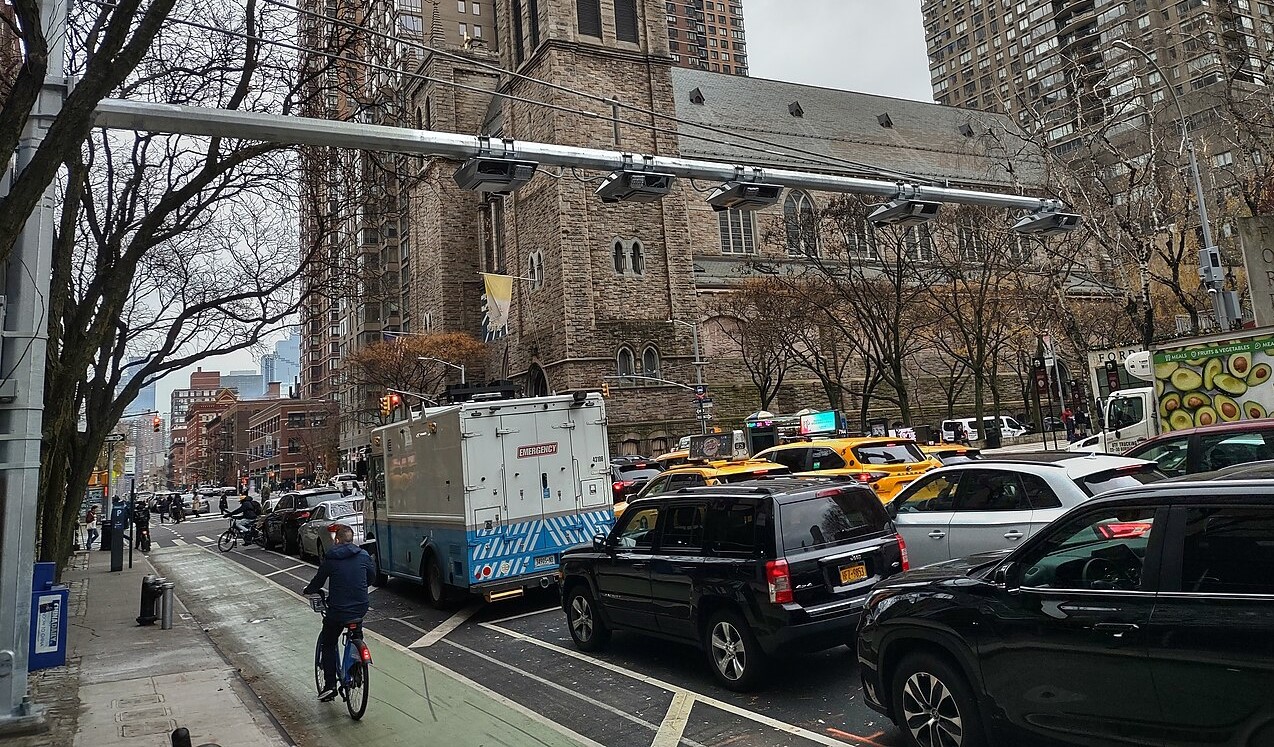"There's nowhere to park." That's what a lot of drivers think, even when there is parking available very nearby — say, on the upper level of a parking garage. This disjunct between perception and reality, which can lead to municipalities overbuilding parking facilities that end up standing empty, is the topic of an intriguing post today from Tom Vanderbilt, on How We Drive.
Vanderbilt recently appeared at a forum with parking guru Donald Shoup and asked Shoup about this problem of perception. Vanderbilt writes:
If people can't see the parking, they think it doesn't exist. (Photo: Corey Holms via Flickr)
One
part of Shoup’s answer stuck with me: He talked of studying a parking
garage in West Hollywood. On the bottom floors, there were cars, and in
the empty spaces, plenty of oil stains to indicate past users. On the
upper floors, he noted, it looked as if the spaces had never been
graced by a single car. And yet the word from drivers was that there
was "nowhere to park." But the problem, Shoup noted, is that drivers’
perception parking supply is informed by the parking spaces they can
actually see. Call it “parking availability bias”…. And the spaces that are most easily seen, of course, are
curb spaces, hence the importance of rational market pricing policies
to ensure turnover and vacancy. A few empty spaces (15%) can go a long
way.This perception is a powerful force and leads cities into all kinds
of policies that turn out to be misguided and rife with unintended
consequences; take the “free holiday parking” approach. Towns hoping to
lure shoppers downtown, away from the big boxes, offer up free parking.
But beware the power of incentives: Given that many of the best parking
spaces in front of local businesses are often occupied (it happens
right here in Brooklyn) by the store keepers themselves, the free
parking bonanza ends up actually enticing local employees (who would
have parked elsewhere or not driven) to grab some free real estate for
the day — leaving would-be shoppers with the perception (all-too-real
in this case) that there’s "nowhere to park."
The post has already started a lively and informative comment thread. Head over and check it out.
More from around the network: The Transport Politic on financing transportation in an era of political cowardice. Extraordinary Observations on shopping centers designed to be unwalkable. And the new Brookings Institution report on suburban poverty gets attention from The Avenue, Rustwire.com and Ryan Avent's The Bellows.





